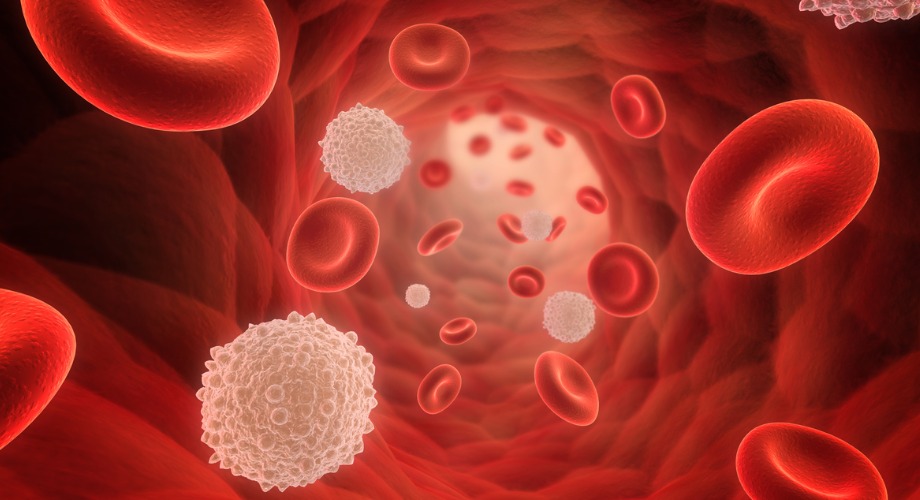
Scientists identify protein that may be silent cause of ‘iron overload’
A variant of the PIEZO1 protein is linked to higher iron levels and is carried by up to a third of people of African descent.
February 10, 2021
LA JOLLA, CA—A sensor protein called PIEZO1, closely related to the protein that enables our sense of touch, plays an unexpected and important role in regulating iron levels in the body, according to a study from scientists at Scripps Research and Howard Hughes Medical Institute (HHMI).
The scientists also found that a mildly overactive form of PIEZO1, which is very common in people of African background, is associated with higher levels of iron and may be a cause of iron-related health problems.
The findings, reported in Cell, advance the scientific understanding of how the body manages its iron levels, and point to the possibility of better treatments for iron overload, which can damage blood vessels, the liver, and the heart, and has been associated with hypertension and diabetes. The linkage of a common gene variant to higher iron levels may also lead to better medical surveillance of iron overload, perhaps especially in people of African heritage.
“Iron overload is a rare and underappreciated medical condition, and while its genetic roots have been well studied in people of European descent, much less has been known about those genetic roots in African populations” says Shang Ma, PhD, a postdoctoral fellow at Scripps Research and the study’s first author.
Ma is member of the laboratory of Ardem Patapoutian, PhD, a professor in the Department of Neuroscience at Scripps Research and an HHMI investigator, as well as the study’s senior author. Patapoutian and his lab identified PIEZO1 and its close cousin PIEZO2 in 2010.
The two PIEZO proteins, which are unlike any other known protein, form propeller-shaped sensors that are embedded in the outer membranes of cells. These sensors admit flows of charged molecules, called ions, when they are mechanically stretched, pressed, or otherwise distorted beyond a certain threshold.
PIEZO2 works in sensory nerves that detect touch, in the bladder to sense fullness, and around joints to enable “proprioception,” which enables us to sense the position of our body and limbs. PIEZO1 is known to play a role in the development of blood vessels, the heart, bone, and immune cells, and helps red blood cells regulate their internal volumes.
A surprise factor in iron metabolism
In the study, Ma and other members of Patapoutian’s team started by examining a set of PIEZO1 gene mutations that cause a rare blood disorder called hereditary xerocytosis, also known as HX. In a 2018 study, the team had shown that these mutations—which lead to red blood cell dehydration—protect the cells from malaria parasites.
But people with HX also tend to have iron overload, though the reason wasn’t clear. In the new set of experiments involving rodents, the researchers showed how iron overload results from PIEZO1 mutations. Surprisingly, it’s not due to the mutations’ effect on red blood cells, but rather their effect on large white blood cells called macrophages.
Macrophages, whose name literally means “big eaters,” help regulate the numbers of red blood cells in the blood by consuming the older cells. Macrophages also are studded with PIEZO1 mechanosensors, which help guide them as they engulf other cells.
The mutations linked to HX cause PIEZO1 sensors to keep their ion channels open longer than normal, making the macrophages gobble red blood cells at an abnormally high rate. Red blood cells are the largest reservoir of iron in the body, and this faster pace of consumption disrupts the usual hormonal regulation of iron. As a result, iron levels rise.
A common risk factor for iron overload
In their 2018 study, Patapoutian’s team identified a different variant of the PIEZO1 gene carried by up to a third of people of African background, making it much more common than HX. This variant also has a mild PIEZO1-overactivating effect and is associated with protection against malaria.
As part of the new study, the team tested blood that had been donated at collection centers by 333 self-identifying African Americans. They found that, as expected, 32.7 percent were carriers of this previously identified PIEZO1 variant. By the usual indirect measures of iron in blood tests, which examine levels of the iron transporter transferrin and the iron-sequestering protein ferritin, these carriers did indeed have significantly higher iron levels than non-carriers, on average. The effect seemed evident only among those older than 40, but it was a strong effect. In the over-40 age group, carriers were about 12 times more likely than non-carriers to have abnormally high ferritin levels.
The findings open up a broad new avenue of investigation into iron metabolism and iron overload, the researchers say, and conceivably could help explain—and might lead to better solutions for—some of the persistent health disparities between African Americans and other ethnicities in the U.S.
“More clinical work is needed to extend our studies, but this apparent new risk factor for age-onset iron overload in such a large population may have profound clinical consequences,” Patapoutian says.
“A role of PIEZO1 in iron metabolism in mice and humans” was authored by Shang Ma, Adrienne Dubin, Yunxiao Zhang, Seyed Ali Reza Mousavi, Yu Wang, Adam Coombs, Meaghan Loud, Immacolata Andolfo, and Ardem Patapoutian.
Funding was provided by the National Institutes of Health (R35 NS105067, R01 DE022358) and HHMI.
For more information, contact press@scripps.edu

